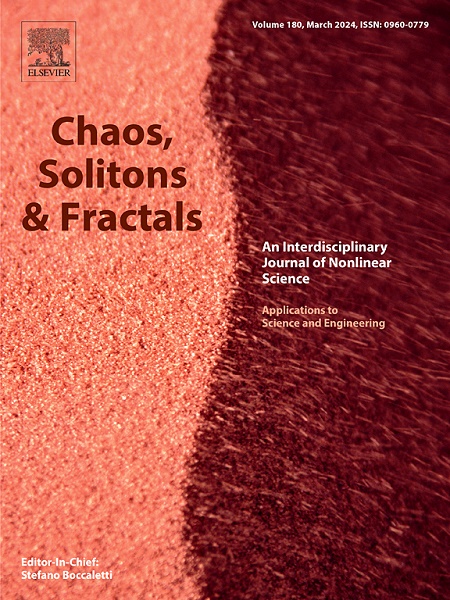Dynamic resistive switching of WOx-based memristor for associative learning activities, on-receptor, and reservoir computing
IF 5.3
1区 数学
Q1 MATHEMATICS, INTERDISCIPLINARY APPLICATIONS
引用次数: 0
Abstract
The rapid expansion of data driven by the fourth industrial revolution has revealed significant limitations in conventional computing architectures, particularly in their ability to efficiently process vast amounts of data. Neuromorphic computing, which draws inspiration from the brain's parallel processing capabilities and efficiency, presents a promising solution to overcome these limitations. This study introduces a TiN/WOx/Pt memory device capable of emulating both nociceptive and synaptic behaviors, highlighting its potential for neuromorphic computing applications. The device successfully replicates key nociceptive functions, including threshold response, allodynia, and hyperalgesia, through the migration of oxygen ions and vacancies within the interface. Furthermore, it demonstrates a range of synaptic plasticity behaviors, such as spike-number-dependent plasticity, spike-amplitude-dependent plasticity, spike-rate-dependent plasticity, and paired-pulse facilitation. In addition, the device achieves 4-bit multibit reservoir computing with high accuracy, showcasing its ability to perform adaptive learning and nonlinear data processing. These results underline the TiN/WOx/Pt memory device's promise for mimicking biological functions and its significant potential in the development of advanced neuromorphic computing systems.
基于 WOx 的动态电阻开关记忆晶体管用于联想学习活动、感应器和水库计算
本文章由计算机程序翻译,如有差异,请以英文原文为准。
求助全文
约1分钟内获得全文
求助全文
来源期刊

Chaos Solitons & Fractals
物理-数学跨学科应用
CiteScore
13.20
自引率
10.30%
发文量
1087
审稿时长
9 months
期刊介绍:
Chaos, Solitons & Fractals strives to establish itself as a premier journal in the interdisciplinary realm of Nonlinear Science, Non-equilibrium, and Complex Phenomena. It welcomes submissions covering a broad spectrum of topics within this field, including dynamics, non-equilibrium processes in physics, chemistry, and geophysics, complex matter and networks, mathematical models, computational biology, applications to quantum and mesoscopic phenomena, fluctuations and random processes, self-organization, and social phenomena.
 求助内容:
求助内容: 应助结果提醒方式:
应助结果提醒方式:


